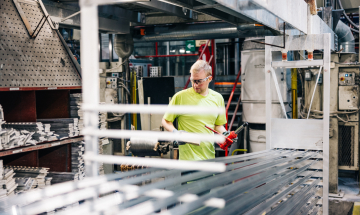
First step in the labour market for the technology industry finally taken
The primary premise of the agreement is that wage adjustments are agreed locally while taking into account the company’s circumstances. The magnitude, timing and method of wage adjustments can be agreed through local bargaining. A local wage settlement is the primary objective for both years.
If no local wage settlement is agreed, wages will be adjusted in accordance with the so-called fallback clause of the collective agreement. In this case, according to the fallback clause, the total increase of 3.3% is divided as follows: In the first agreement year, a general increase of 1.3% is applied to wages by 1 March 2020. In the second agreement year, a general increase of 1.4% is applied to wages by 1 February 2021, in addition to which the employer uses 0.6% for a company or workplace-specific element.
The 24-hour extension of working hours included in the previous agreement was removed on 31 December 2019, when Technology Industries of Finland terminated the protocol on the hours included in the Competitive Pact. However, as part of the new settlement, a working time experiment was agreed to allow agreeing on a working time extension of up to 170 hours per year through local bargaining.
In the collective agreement for technology industry employees, the extra hours of the Competitive Pact were included in a protocol that could be terminated and, unlike in other sectors, the hours were not included in the agreement framework.
The settlement that was agreed upon on Friday extends the scope of local bargaining so that in addition to wage adjustments, local remuneration systems can also be agreed at the workplace. Apart from a few experiments, the grading of wages has so far been based on the so-called “PARAKE” system, so this settlement is a new opening in the development of remuneration.
Not ideal, but a tolerable settlement in terms of cost competitiveness
According to Minna Helle, Executive Director, Industrial Relations, the settlement is not ideal, but it is the best solution that could be reached in this difficult labour market situation. The negotiations were conducted under the constant threat of new industrial actions. However, the settlement can be considered to be tolerable in terms of cost competitiveness.
“Unfortunately, the settlement does not promote employment to the extent that we hoped. It inevitably adds pressure on the country’s government to create measures that increase employment. There is not much time to come up with the measures if the government wants to achieve its objectives concerning employment,” says Helle.
“Nevertheless, it is valuable that we could finally take the first step in the negotiation round after a lengthy negotiation process. Many negotiation tables have been waiting specifically for the agreement for the technology industry. Hopefully, the settlement will calm the restless labour markets, and unions can proceed with their negotiations quickly without disruptions in industrial peace. The National Conciliator also deserves thanks for the background work she carried out for the agreement,” says Helle.
According to Helle, it is extremely important that companies now actively negotiate local wage settlements. Local settlements are the best method for engaging staff to commit to common goals, for encouraging the development of professional skills and for developing productivity.
For further information, please contact:
Minna Helle, Executive Director, Industrial Relations, phone +358 50 341 4884


